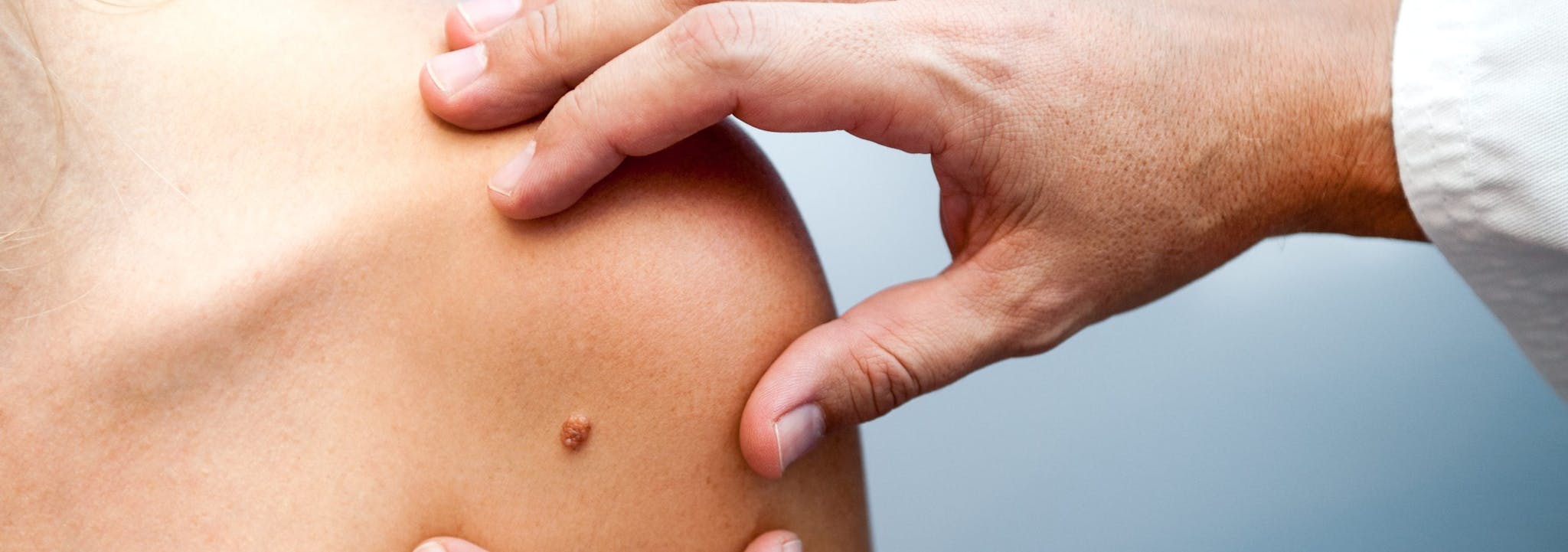
2024-07-12T16:54:51
Sunscreen Travel Tips
- Dermatology
April 1, 2016 | Dermatology

When Ben Franklin said, “An ounce of prevention is worth a pound of cure,” he probably wasn’t referring to skin cancer, but the statement is still highly applicable. According to the Centers for Disease Control and Prevention (CDC), it’s the most common type of cancer found in the United States. In 2012, a total of 67,753 Americans received a diagnosis of melanoma of the skin; the same year, 9,251 died from it.
Thankfully, most skin cancers can be prevented. While nothing can guarantee that you won’t develop this type of malignancy, you can greatly reduce your risk. Among the most important things linked to healthy skin are lifestyle practices. Here are seven of them.
Head for the shade between 10:00 a.m. and 4:00 p.m., regardless of the season or cloudy days. The American Academy of Dermatology (AAD) says that if your shadow is shorter than you are, you should look for shade.
Always avoid sunburns. Just one bad one ups your chance of developing skin cancers like melanoma.
You need a product with an SPF rating of 15 or higher, and you need to wear it year-round. While sunscreen doesn’t have the capability of filtering out all potentially harmful ultraviolet radiation, your product should help protect you from both UVA and UVB rays.
UV radiation effects can increase by as much as 80 percent when sunlight reflects off water, snow, ice, and sand. How often you apply sunscreen is important. Put it on half an hour before going outdoors, then reapply every two hours, whenever you sweat heavily, go into the water, or dry off with a towel.
That means covering your skin to protect it from any ultraviolet rays not blocked by sunscreen. What’s best to wear? Dark, tightly-woven clothing that covers your legs and arms offers the best protection. Don’t forget a wide-brimmed hat for face and neck protection and sunglasses to protect your eyes. The CDC advises that glasses in a wraparound style that block UVA and UVB rays are the best choice.
Some machines feature lighting that’s actually worse for you than the sun and that’s also minus any cloud cover. Self-tanning products are alternatives if you still want to get that summertime glow.
Some medications have been linked to boosting the riskiness of sun exposure so that your skin burns more readily. Check with your physician or pharmacist about whether any of the drugs you take carries this extra risk.
Be on the lookout for anything new, bumps, moles, freckles, and birthmarks. For parts of the body that are hard to see, such as the scalp and the ears, use a mirror.
During your self-exam, you’re looking for:
Yearly skin checkups by a healthcare professional can save your life. If you spot any changes, particularly anything bleeding or getting larger on your skin, be sure to see a physician who specializes in dermatology.
To learn more about your skin and make sure it stays healthy, call today to make an appointment with a board-certified dermatologist who puts patients’ needs first.
WRITTEN BY:
The Live Better Team


2024-07-12T16:54:51

2024-07-02T11:42:04

2024-07-01T13:49:28

2024-06-21T14:29:51
This information is not intended to replace the advice of a medical professional. You should always consult your doctor before making decisions about your health.